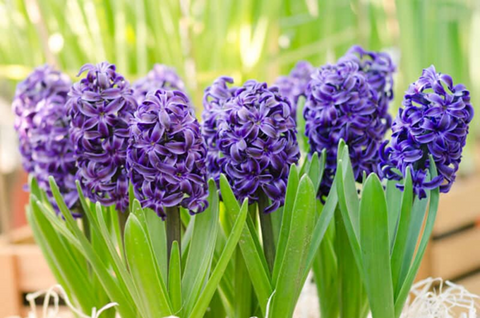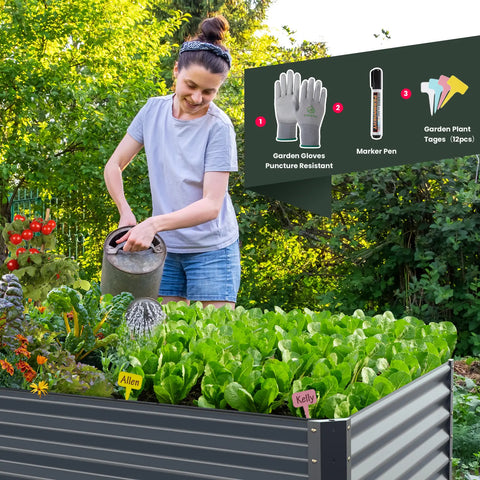Lavender, with its delicate fragrance and vibrant blooms, is not only a beautiful addition to any garden but also a versatile herb with numerous culinary, crafting, and therapeutic applications. For those new to cultivating this enchanting plant, embarking on the journey of growing lavender can be both rewarding and fulfilling. In this comprehensive guide, we will explore the essential steps and considerations to ensure success in growing lavender, from selecting the right variety to harvesting and utilizing its bounty.

Choosing the Right Lavender Variety
Understanding lavender species
Lavender encompasses various species and cultivars, each with its unique characteristics and growth habits. From the robust English lavender (Lavandula angustifolia) to the aromatic French lavender (Lavandula dentata), understanding the differences among species is crucial in selecting the ideal variety for your garden.
Considerations for climate and soil conditions
Lavender thrives in sunny, well-drained environments, making it well-suited for regions with mild to hot climates. However, certain varieties exhibit greater tolerance to specific soil types and climatic conditions. Whether you reside in a humid coastal area or a dry, arid region, considering these factors will ensure optimal growth and vitality of your lavender plants.
Determining the purpose of cultivation
Before choosing a lavender variety, it's essential to clarify your intentions for cultivation. Are you primarily interested in ornamental purposes, culinary endeavors, or perhaps exploring lavender's therapeutic properties? By aligning your goals with the characteristics of different lavender varieties, you can make an informed decision that best suits your needs.
Preparing the Growing Site
Sunlight requirements
Lavender thrives in full sunlight, requiring a minimum of six to eight hours of direct sunlight per day. Select a location in your garden that receives ample sunlight and provides protection from strong winds, as excessive exposure can cause stress and damage to the delicate foliage.
Soil preparation techniques
Well-drained, alkaline soil is paramount for the successful cultivation of lavender. Prior to planting, amend heavy or clay soils with organic matter such as compost or sand to improve drainage and promote root health. Conducting a soil pH test and adjusting accordingly will ensure an optimal growing environment for your lavender plants.
Drainage considerations
In addition to soil composition, proper drainage is essential for preventing waterlogged conditions, which can lead to root rot and other moisture-related issues. Raised beds or mounded planting areas can facilitate drainage in heavy soils while incorporating gravel or perlite into the soil mix can further enhance drainage capabilities.
Planting Lavender
Selecting healthy lavender plants
When purchasing lavender plants, choose specimens that exhibit vigorous growth, with dense foliage and no signs of disease or pest infestation. Inspect the roots for a healthy, fibrous texture, and avoid plants with root-bound or wilted root systems.
Proper spacing and arrangement
Give your lavender plants ample space to thrive by spacing them according to their mature size and growth habit. Typically, lavender should be planted 12 to 24 inches apart to allow for adequate air circulation and prevent overcrowding. Consider the eventual spread of the variety you've selected to ensure optimal spacing.
Transplanting techniques
To transplant lavender seedlings or established plants, dig a hole slightly larger than the root ball and gently loosen the roots before placing them in the prepared soil. Ensure that the crown of the plant sits level with the surrounding soil surface and backfill the hole, firming the soil gently around the roots. Water thoroughly to settle the soil and promote establishment.

Watering and Irrigation
Understanding lavender's water needs
While lavender is drought-tolerant once established, adequate moisture is crucial during the initial establishment period. Water newly planted lavender deeply but infrequently, allowing the soil to dry out between watering sessions to encourage deep root growth and resilience to drought conditions.
Best practices for watering
To avoid overwatering, which can lead to root rot and other moisture-related issues, water lavender plants at the base rather than overhead to minimize moisture on the foliage. Use a soaker hose or drip irrigation system to deliver water directly to the root zone, applying water slowly and evenly to ensure thorough penetration.
Irrigation options and considerations
In regions with extended periods of dry weather, supplemental irrigation may be necessary to support lavender growth and flowering. Consider installing a timed irrigation system or utilizing moisture-retentive mulch to conserve soil moisture and reduce the frequency of watering, particularly during the hot summer months.
Fertilizing Lavender
Nutrient requirements of lavender plants
Lavender thrives in lean, well-drained soils and generally requires minimal fertilization once established. However, incorporating a balanced fertilizer low in nitrogen and high in phosphorus and potassium can promote healthy root development and vibrant blooms without encouraging excessive vegetative growth.
Organic vs. synthetic fertilizers
Whether you opt for organic or synthetic fertilizers, choose products specifically formulated for woody herbs or perennials to meet the nutritional needs of lavender plants. Organic options such as compost, aged manure, or fish emulsion offer slow-release nutrients and improve soil structure over time, while synthetic fertilizers provide readily available nutrients for immediate uptake.
Timing and frequency of fertilization
Apply fertilizer sparingly to lavender plants in early spring, just as new growth begins to emerge, and again after the first flush of blooms to support ongoing flowering. Avoid overfertilizing, as excessive nitrogen can promote lush foliage at the expense of flowers and compromise the overall health of the plant.
Mulching Techniques
Benefits of mulching for lavender
Mulching serves multiple purposes in lavender cultivation, helping to conserve soil moisture, suppress weeds, and regulate soil temperature. Organic mulches such as straw, pine needles, or shredded bark also contribute organic matter to the soil as they decompose, enriching the growing environment for lavender plants.
Types of mulch suitable for lavender
Choose a mulch that complements the aesthetics of your garden while providing effective weed suppression and moisture retention. Light-colored mulches such as gravel or crushed stone are ideal for reflecting sunlight and reducing soil temperature, particularly in hot climates where excessive heat can stress lavender plants.
Proper application methods
Apply mulch around the base of lavender plants, leaving a small gap between the stems to prevent moisture accumulation and potential rotting. Maintain a layer of mulch approximately 2 to 4 inches thick, replenishing it as needed to maintain adequate coverage and effectiveness throughout the growing season.

Pruning and Deadheading
Importance of pruning for lavender health
Regular pruning is essential for maintaining the compact growth habit and abundant flowering characteristic of lavender plants. Pruning promotes air circulation, reduces disease pressure, and stimulates new growth, ensuring a healthy and productive lavender garden year after year.
Techniques for shaping and maintaining lavender plants
To shape lavender plants and encourage bushy growth, prune them back by one-third to one-half of their height in early spring, just as new growth begins to emerge. Use sharp, clean pruning shears to make angled cuts above leaf nodes, taking care not to cut into old wood, which may inhibit regrowth.
Deadheading to promote continuous blooming
Remove spent blooms regularly throughout the growing season to encourage the production of new flower buds and prolong the flowering period of lavender plants. Deadheading also prevents the formation of seed heads, redirecting the plant's energy toward foliage growth and subsequent flower production.
Pest and Disease Management
Common pests affecting lavender
Lavender is relatively pest-resistant but may occasionally fall prey to aphids, spider mites, or whiteflies, particularly in hot, dry conditions. Monitor plants regularly for signs of pest infestation, such as distorted foliage or sticky honeydew residue, and intervene promptly to prevent population outbreaks.
Natural pest control methods
Encourage beneficial insects such as ladybugs, lacewings, and parasitic wasps to prey on pest populations by providing habitat and food sources in your garden. Additionally, botanical insecticides derived from neem oil, pyrethrin, or insecticidal soap offer effective, low-toxicity options for controlling pests on lavender plants.
Identifying and treating common diseases
Lavender is susceptible to fungal diseases such as root rot, powdery mildew, and gray mold, particularly in humid or poorly ventilated conditions. Practice good sanitation by removing and disposing of infected plant material promptly, and avoid overhead watering to minimize moisture on the foliage.
Harvesting Lavender
Knowing when lavender is ready for harvest
Harvest lavender flowers when they are in full bloom but before they begin to fade or dry out, typically in the morning after dew has evaporated. Choose stems with vibrant colors and strong fragrances, as these indicate peak oil content and aromatic potency.
Harvesting techniques for optimal yield and quality
Use sharp scissors or pruning shears to cut lavender stems just above the first set of leaves, taking care to avoid damaging the surrounding foliage. Bundle harvested stems into small bunches and hang them upside down in a warm, dry location with good air circulation to facilitate drying.
Post-harvest handling and storage
Once dried, remove lavender flowers from the stems and store them in airtight containers or resealable bags to preserve their fragrance and flavor. Store dried lavender in a cool, dark place away from direct sunlight, using it within six months to a year for optimal quality and potency.

Utilizing Lavender
Culinary uses of lavender
Lavender adds a delightful floral aroma and subtle flavor to a variety of culinary creations, from baked goods and desserts to savory dishes and beverages. Experiment with lavender-infused syrups, salts, and oils to enhance your favorite recipes with a touch of aromatic sophistication.
Crafting with lavender
Explore the endless creative possibilities of crafting with lavender, from handmade soaps and candles to potpourri sachets and floral arrangements. Incorporate dried lavender flowers into wreaths, bouquets, or decorative ornaments to infuse your home with natural beauty and fragrance.
Aromatherapy and medicinal applications
Harness the therapeutic properties of lavender essential oil for relaxation, stress relief, and natural healing. Dilute lavender oil with a carrier oil such as jojoba or almond oil to create massage oils, bath salts, or aromatherapy blends for promoting relaxation and wellbeing.
Troubleshooting Common Issues
Yellowing or browning of leaves
Yellowing or browning of lavender leaves may indicate water stress, nutrient deficiencies, or soil pH imbalance. Ensure proper watering practices, adequate fertilization, and soil pH within the optimal range of 6.5 to 7.5 to promote healthy foliage color and growth.
Stunted growth or poor flowering
Stunted growth or poor flowering in lavender plants may result from overcrowding, insufficient sunlight, or improper pruning. Provide adequate spacing, ample sunlight, and regular pruning to encourage robust growth and abundant flowering throughout the growing season.
Addressing root rot and other soil-borne diseases
Root rot and other soil-borne diseases can occur in poorly drained soils or as a result of overwatering. Improve soil drainage, avoid overwatering, and practice good sanitation to prevent the spread of disease and maintain the overall health of your lavender plants.
Conclusion
Embarking on the journey of growing lavender offers a wealth of rewards for novice and experienced gardeners alike. By following the comprehensive guidelines outlined in this beginner's guide, you can cultivate thriving lavender plants that adorn your garden with beauty, fragrance, and versatility. Whether you're drawn to lavender for its ornamental charm, culinary delights, or therapeutic benefits, the enchanting allure of this beloved herb is sure to captivate your senses and enrich your gardening experience for years to come.













